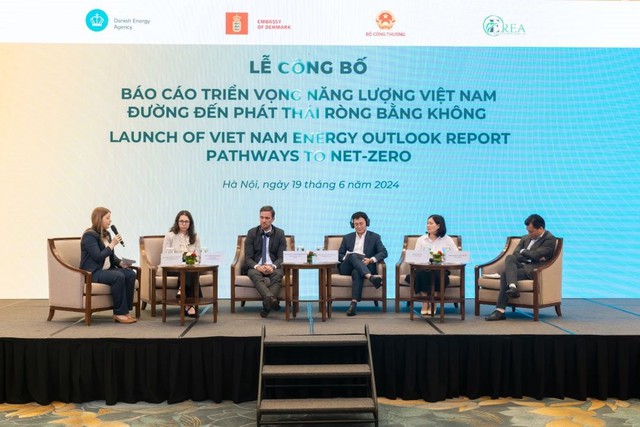Viet Nam Energy Outlook Report 2024 released
VGP - Viet Nam's CO2 emissions should peak in 2030 and the green energy transition needs to happen urgently and at a faster pace than previously.

Delegates at the launching ceremony - Photo: tainguyenmoitruong.vn
The above finding was highlighted in the Viet Nam Energy Outlook Report-Pathways to Net Zero which was released on June 19.
According to the report, Viet Nam's target of achieving the climate neutrality by 2050 is not only technically feasible but also the most cost-effective scenario.
With enormous potential for solar power, onshore and offshore wind power, Viet Nam is well positioned to transform its energy sector from fossil fuels to renewable energy and leverage its national resources.
The report shows how Viet Nam through the expansion of renewable energy, along with electrification of the industry and transport sectors, can secure a cost-efficient green transition and reach its target of net-zero emissions by 2050, while reducing Viet Nam's dependence on energy imports.
The report analysis showed that an additional 56 gigawatts of renewable energy (17 GW onshore wind power and 39 GW solar power) need to be added by 2030 if Viet Nam is to stay on track for carbon peak in 2030 and climate neutrality by 2050.
The report was developed by Viet Nam's Electricity and Renewable Energy Authority, the Danish Energy Agency (DEA) and the Embassy of Denmark in Viet Nam.
The report is the fourth in a series of outlook publications under the Danish-Vietnamese Energy Partnership Program, a long-term partnership between Denmark and Viet Nam on the green energy transition.
The report presents scenarios for the development of the Vietnamese energy system towards 2050, focusing on analyzing realistic pathways for Viet Nam to achieve its net-zero commitment by 2050.
The report delivers a clear message that the most beneficial and cost-effective way to support Viet Nam's sustainable growth is through a massive expansion of solar and wind power, as well as the electrification of transportation and industry. It is critical to accelerate the green energy transition in Viet Nam now to avoid unnecessary costs./.

